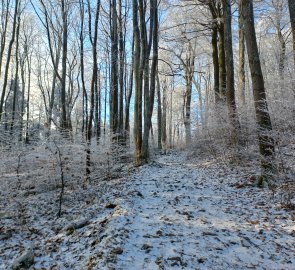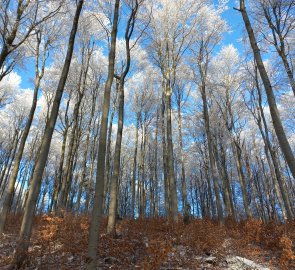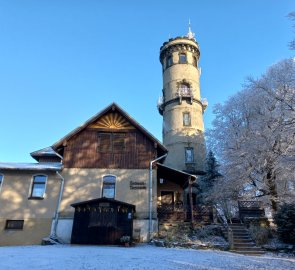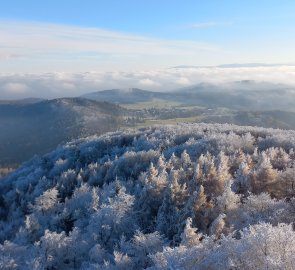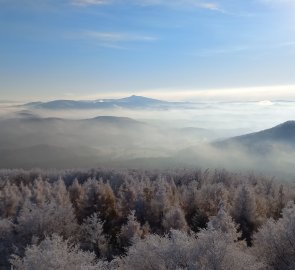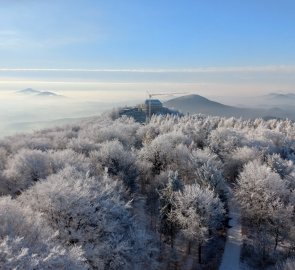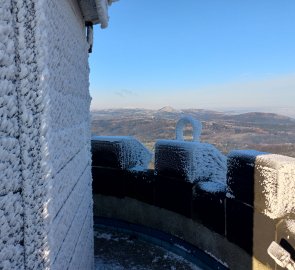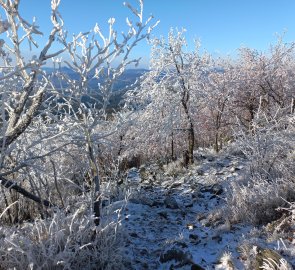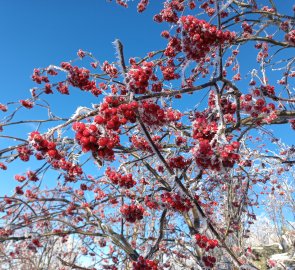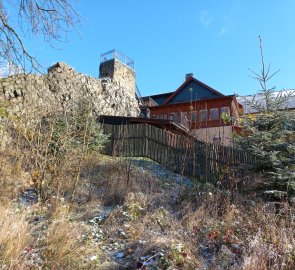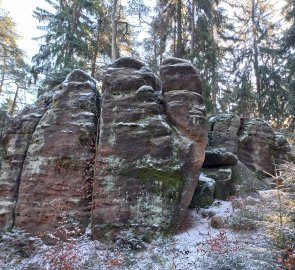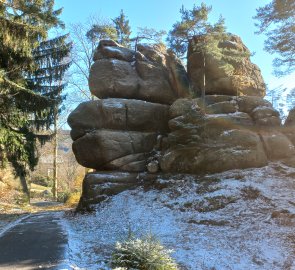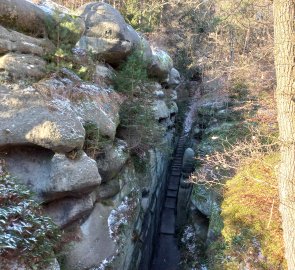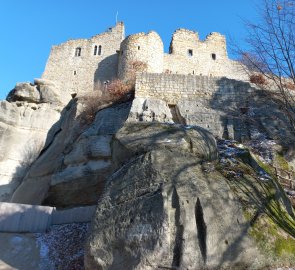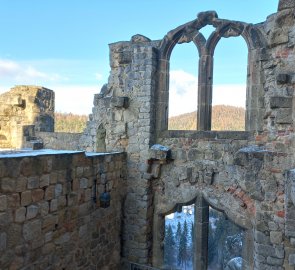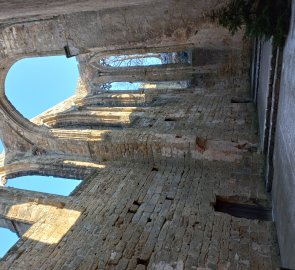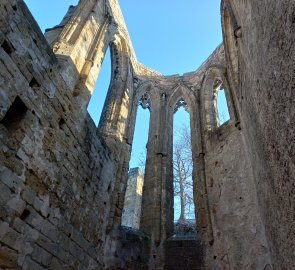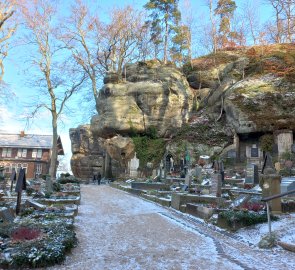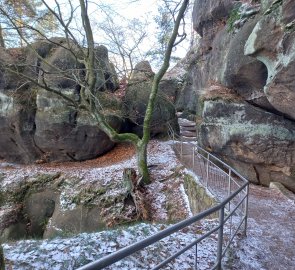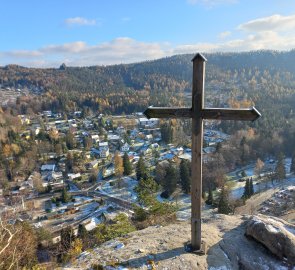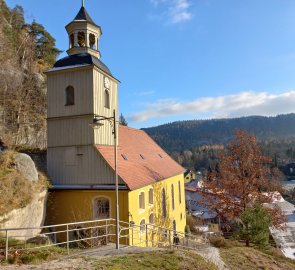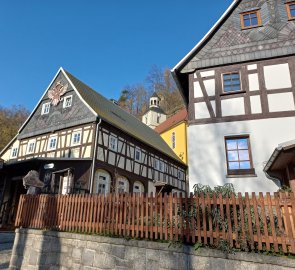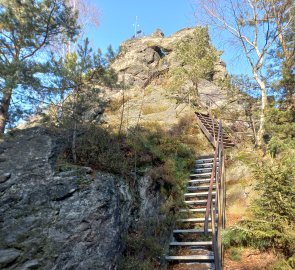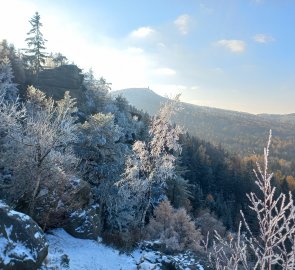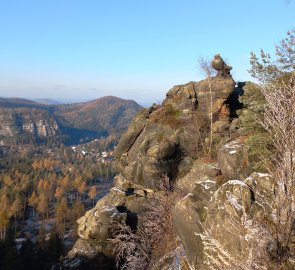Autumn hike to Hvozd and rock castle Oybin
Mountain range, region / State
/ Germany
Season
Fall
19. 11. 2022
Difficulty
1 / 5
Elevation
↑ 688 m
↓ 688 m
Length
13.0 km
5 hours
Altitude
max. 737 m n.m.
min. 397 m n.m.
Tourist map of the Lusatian Mountains
Tips for hikes in the country Germany
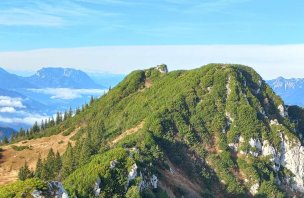
Autumn ascent of the Hörndlwand in the Bavarian Alps
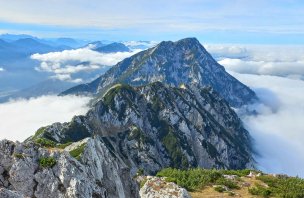
Zwiesel - Hochstaufen mountain pass in the Chiemgau Alps
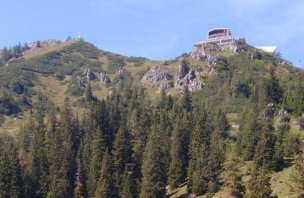
Ascent of Mount Jenner from Königssee
Trip to the Hvozd mountain in the Lusatian Mountains
Starting point
Luftkurort Lückendorf car park (payable, 5 €/day). You can also leave your car in one of the unpaid forest car parks along the road.
Description of the hike
Hvozd - Hochwald (749 m) is the fifth highest hill in the Lusatian Mountains. It has two peaks - the southern one crosses the border with the German state of Saxony and has an observation platform and a hut, while the other has an old lookout tower and a restaurant called Hochwaldturmbaude. From both peaks there are magnificent circular views of the Czech-German-Polish tri-border. Near Hvozd on the German side is the romantic ruins of the rock castle and abbey of Oybin and the rock town. It should be noted that the area is much visited in the high season and Oybin in particular is a popular tourist attraction. So I chose a frosty autumn day for my trip, hoping not to meet as many people as in the high season.
I leave the car on the German side in the village of Luftkurort Lückendorf. As the name suggests, it was a so-called air spa, a sunny place on the southern side of the Zittauer Gebirge (the German name for the Lusatian Mountains). In the 19th century, people from the cities came here for recreation and to breathe in the fresh air. Several hiking trails start from the car park. They are marked with the same colours as on our side. It's a frosty bright morning, the thermometer shows -6 degrees, so I briskly set off for Hvozd. The morning inversion is beginning to melt away, with blue skies and frosted trees above me. It takes less than an hour to reach the fork in the trail between the two peaks.
First I head right to the lookout tower. The hut is closed in November, but the tower door opens. You can drop €1.50 or 45 CZK into the money box and then climb the 128 spiral stairs to the lookout. It's a beautiful spectacle at the top - the sun is breaking through pillows of inversion mist, the peaks of the surrounding hills are already white, but the valley still glows with autumn colours.
From Lückendorf to the east, you can see the Jizera and Krkonoše Mountains, the ridge of Ještěd rising up, Ralsko and Bezděz further south, to the west the perfect cone of Klíč with Nový Bor at its base, and to the northwest Jedlová and Luž, which I would not describe as the highest peak of the Lusatian Mountains from this view. The view is closed to the east by Oybin, the town of Zittau (Zittau) and the powerfully smoking Polish power plant Turow. I warm up with hot tea from a thermos and enjoy the view undisturbed, I haven't met anyone since the morning.
From the lookout tower I head to the second peak, where the hut is currently being rebuilt, but the viewing platform is open. From the platform, I then descend down a rocky path on the red marker and follow the border to Janské kameny. The viewpoint, which can only be reached via the hut next door, is closed, as is the hut, and so I continue straight along the line, across the meadows towards Oybin. Behind the asphalt road, the first sandstone cliffs appear. They are carved with years, markers and, unfortunately, the names of the stupid. I drop down between the first houses of Oybin. Along the Ritterweg, the knight's path, I come to the castle.
In the low season (November - April) the castle is open from 10 am to 4 pm, entrance fee is 5 €. Luckily there are not too many people here, both German and Czech are spoken and all the signs are bilingual. The castle and abbey is beautiful, photogenic. You'll need at least an hour to climb the whole thing, and you'll climb dozens of stairs. Anyone interested in the history of the castle will find a little something at the end in the Interesting Facts.
I will just briefly mention that it was founded in the 14th century by the Czech King Charles IV, the abbey was built by the builders of the St. Vitus Cathedral in Prague, the castle was unsuccessfully besieged by the Hussites in the 15th century and its destruction began in the 17th century with the abolition of the monastery by the Reformation movement. There is a circular route around the castle carved in the rock, safely secured by railings. I enthusiastically crawl through the courtyard, admiring the high arches of the former monastery and the impressive rock cemetery, walk around the castle on a narrow path and crawl through the rock crevices back to the castle restaurant.
Difficulty
Easy trek on marked hiking trails. The elevation gain on the trail is more than 500 meters, so better fitness is recommended. In high season there are a lot of people.
Water availability
In the summer tourist attractive area - restaurants, snacks, pastry shop in Kurort Oybin, hunger, nor thirst is not a threat. Out of season refreshments in the village of Oybin.
Sleeping options
Tourist area, accommodation can be found on the Czech and German side without any problems.
Mountain peaks
Hvozd - Hochwald (749 m), circular views of the Lusatian Mountains, Jizera Mountains, Krkonoše Mountains and Ještěd.
Danger
Normal hiking, no danger. The rock ruins of Oybin Castle are well protected.
Food
Refreshment options along the way - chalets in Hvozd, restaurants, snack bars, cafes in Oybin.
Attractions
Oybin Castle and Abbey. The first documented settlement of the rock massif dates back to the Bronze Age (11th-12th centuries BC). The castle lay on the trade route between Bohemia and Saxony and was sometimes taken over by marauding knights. In the 13th and 14th centuries, the castle was first fortified and used to protect the trade route. From 1346 it belonged to the Bohemian Crown.
In 1364, Charles IV built an imperial house, which he used as a resting place. In 1366, the construction of the Gothic church and the Celestine Abbey began, in cooperation with the Prague workshop of Petr Parléř, who also built the Prague church of St. Vitus. During the Hussite wars the castle was besieged twice unsuccessfully. Since then, Oybin was considered impregnable and the king had part of the St. Vitus treasure transported to it. The castle was expanded until the second half of the 16th century. As a result of the Reformation (the split in the Catholic Church, the emergence of Protestant movements), the monastery was dissolved and thus began a gradual decline.
In 1577 the church was struck by lightning and the castle burnt down. Further damage occurred when the rock collapsed in the 18th century. At the beginning of the 19th century the castle was rediscovered, cleared of rubble and partially repaired. The site became popular among romantic painters and after the introduction of the Zittau narrow gauge railway, spa guests and tourists began to flock here. Today, up to 100,000 tourists visit Oybin every year, and guided tours and historical festivals are held here.
